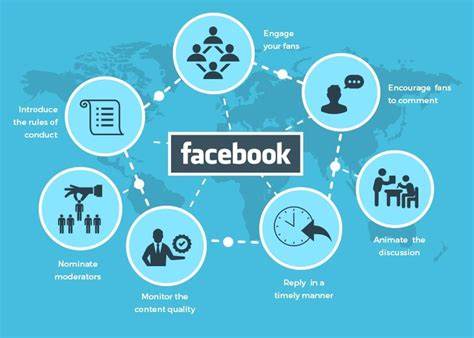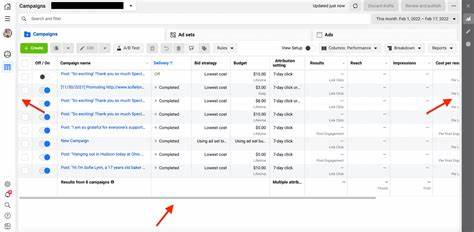Facebook has evolved into one of the most powerful platforms for digital marketing, offering businesses a wealth of tools and resources to reach their target audience. With over 2.9 billion active users worldwide, Facebook offers marketers the chance to connect with potential customers, build brand awareness, drive sales, and foster lasting relationships. However, navigating the world of Facebook digital marketing can be overwhelming, especially for beginners.
This step-by-step guide is designed to help you master Facebook marketing from scratch. Whether you’re a small business owner or a marketing newbie, these essential tactics and strategies will guide you toward creating successful campaigns. From understanding Facebook Ads Manager to crafting compelling ads, this guide will help you effectively use Facebook to promote your business and achieve your goals.
1. Understanding the Basics of Facebook Marketing
Before diving into Facebook Ads or advanced marketing strategies, it’s essential to understand the fundamentals of Facebook marketing. At its core, Facebook digital marketing revolves around engaging with your audience and building a presence on the platform.

Create a Facebook Business Page if you haven’t already. This page will serve as the foundation of your marketing efforts, where you can post updates, engage with followers, and run ads. Your page should include a clear description of your business, contact information, and any relevant links. Keep your content fresh and engaging to encourage users to interact with your page.
Once your page is set up, familiarize yourself with Facebook Insights, a tool that provides valuable analytics about your page’s performance. This data will help you understand your audience’s behavior, which is crucial for crafting tailored content and ads.
2. Setting Clear Goals for Your Facebook Marketing Campaign
Effective marketing begins with clear, measurable goals. Before you invest in any campaigns, define what you want to achieve. Facebook offers a variety of campaign objectives that you can choose from, including:
- Brand Awareness: Increase visibility of your brand among your target audience.
- Lead Generation: Capture potential customer information like emails or phone numbers.
- Traffic: Drive users to your website or a specific landing page.
- Conversions: Encourage users to take specific actions, such as making a purchase or signing up for a service.
Having a well-defined goal will ensure that your efforts are focused and that you can measure the success of your campaigns. If you’re just starting, focus on awareness and engagement before moving toward more complex objectives like conversions.
3. Crafting a Targeted Audience for Your Campaigns
One of Facebook’s most powerful features is its advanced audience targeting capabilities. To ensure your ad budget is spent wisely, you must target the right audience. Facebook allows you to define your target audience by:
- Demographics: Age, gender, location, and language.
- Interests: People who are interested in specific topics, products, or services.
- Behaviors: Users’ online activities, such as shopping habits or device usage.
- Custom Audiences: You can upload customer data (like email lists) or target people who have already engaged with your business.
- Lookalike Audiences: Facebook identifies users who share similar behaviors and characteristics to your best customers.
By narrowing down your audience, you can ensure your ads are shown to those most likely to engage with your content, making your campaigns more cost-effective and successful.
4. Creating High-Quality Facebook Ads
Once you’ve set your objectives and defined your audience, it’s time to create your ad. Facebook offers several ad formats, each with its own advantages. Here are the most popular types:
- Image Ads: Simple yet effective, image ads are perfect for showcasing products or services. Make sure your images are high-quality, eye-catching, and relevant to your audience.
- Video Ads: Video ads are highly engaging and can help tell a story about your brand or product. Keep videos short, clear, and compelling to maintain viewers’ attention.
- Carousel Ads: Carousel ads allow you to display multiple images or videos in a single ad. This format is great for showcasing various products or features in one campaign.
- Slideshow Ads: These ads use a series of images to create motion, which is a great alternative if you don’t have video content.
- Collection Ads: Ideal for e-commerce businesses, collection ads let you showcase a group of products with a link to your website for easy shopping.
When designing your ads, it’s important to keep the following in mind:
- Engaging Copy: Your ad copy should be concise, clear, and action-oriented. A compelling call-to-action (CTA), such as “Shop Now” or “Learn More,” is essential to guide users on what to do next.
- Strong Visuals: Whether it’s an image or video, your visual content must resonate with your target audience and align with your brand message.
- Mobile Optimization: Since most users access Facebook through mobile devices, make sure your ads are mobile-friendly. Ensure that your text and images are legible on smaller screens.
5. Utilizing Facebook Ads Manager to Launch Campaigns
Facebook Ads Manager is your one-stop-shop for creating, managing, and tracking your ads. Here’s how to navigate Ads Manager as a beginner:

- Create a Campaign: In Ads Manager, start by selecting your campaign objective. This determines the settings for your ad, such as budget and targeting.
- Set Your Budget and Schedule: You can choose a daily or lifetime budget, depending on how much you’re willing to spend. Set a start and end date for your campaign or opt for continuous running.
- Choose Your Ad Placement: Facebook offers automatic placement, which optimizes your ads across Facebook, Instagram, Messenger, and Audience Network. Alternatively, you can manually select placements based on where you want your ad to appear.
- Monitor and Optimize: After launching your campaign, regularly check your ad performance through Facebook Analytics. Key metrics include click-through rate (CTR), conversion rate, and cost-per-click (CPC). If necessary, tweak your targeting, visuals, or budget to improve performance.
6. Testing and Improving Your Campaigns
A key element of Facebook marketing is continuous testing and optimization. A/B testing (also known as split testing) is a powerful method to experiment with different versions of your ads to see which performs best.
You can test various elements such as:
- Ad Copy: Try different messaging to see which resonates more with your audience.
- Images vs. Videos: Experiment with different formats to understand which performs better.
- Targeting: Test different audience groups to find the most responsive demographic.
- CTA Buttons: Test different calls-to-action to see which one drives more conversions.
Use the data from your tests to adjust your campaigns for improved performance. Facebook provides real-time results, which allows for swift decision-making and adjustments.
7. Analyzing Your Results
Once your campaign is up and running, monitoring performance is crucial to understanding what works and what doesn’t. Facebook Insights is a powerful tool that provides detailed analytics about your ad campaigns, including engagement metrics like likes, comments, shares, and clicks.
By evaluating this data, you can identify patterns, measure your ROI, and optimize future campaigns. If you’re using Facebook Pixel, you can track on-site actions like purchases or sign-ups, giving you a deeper understanding of how your Facebook ads drive actual business results.
8. Scaling Your Facebook Campaigns
Once you’ve refined your strategy and achieved good results with smaller campaigns, it’s time to scale. Increasing your budget for successful campaigns, expanding your audience, and diversifying your ad types are all effective ways to grow your Facebook marketing efforts.
However, scaling requires continuous testing and adjustments to ensure that your increased budget still generates profitable returns. Keep monitoring your campaigns and tweak elements such as bidding strategies, ad copy, and creatives to maintain performance as you grow.
Conclusion: Building Success with Facebook Digital Marketing
Facebook is one of the most effective platforms for digital marketing, and by mastering it, you can create campaigns that drive engagement, generate leads, and ultimately boost sales. By following this step-by-step guide, you will understand the key elements of Facebook marketing, including setting clear objectives, targeting the right audience, creating compelling ads, and monitoring campaign performance.
With time and practice, Facebook digital marketing can become a powerful tool in your overall marketing strategy. Keep learning, testing, and optimizing, and you’ll be well on your way to mastering Facebook marketing and achieving your business goals.

Leave a Reply